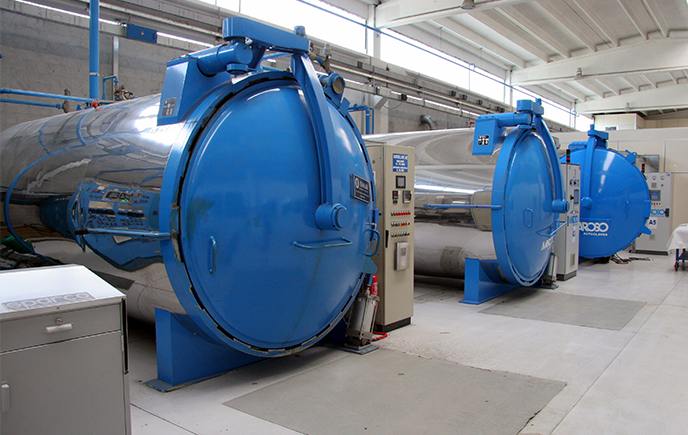In this article
Changing the ring saves a customer over £100,000p.a
Some customer issues demand in-depth investigation and complex solutions, but deliver relatively insignificant cost savings. Then there was this one...

A manufacturer of agrochemicals uses a large vessel for storage of various media. The vessel is sealed with two O-rings, each over 1.8m in diameter. For several years, the OEM-supplied O-rings repeatedly failed – sometimes as soon as 4 weeks after replacement.
Once is irritating. Twice is annoying. Up to twelve times a year is infuriating and incredibly expensive. Yet it took an ERIKS application engineer only minutes to spot the problem, propose the solution, and save the customer at least £100,000 a year.
Poor-performing seals
The poor performance of the seals was causing massive downtime costs for the customer.
Each time a seal failed the production line had to be halted, the vessel emptied and dried, the failed O-ring removed, the area for sealing cleaned, and a new O-ring fitted before production could restart.
The whole process typically took 12-16 hours and several site engineers. The resulting costs and losses were in the order of £50,000 – £60,000 per seal failure. With as many as a dozen failed seals per year, the figures were frightening.
However, every time an O-ring failed, the customer simply called the OEM who supplied a like-for-like replacement – no questions asked.
Fortunately, ERIKS application engineers are trained to ask questions.
What? Where? Why?
Already on site carrying out a Stores survey, an ERIKS’ application engineer from the Sealing & Polymer Product Business Unit was invited to take a look at the latest failed O-ring.
Naturally he considered all the usual causes of failure. Was it the material the O-ring was made from? Was it the media stored in the vessel? Was it the operating environment? Was the O-ring the wrong size?
Then a glance at the failed seal immediately revealed the answer.
It was made from an EPDM grade material that was clearly suitable for the job. There was no degradation, and no physical damage. It was suited to working at the low temperature and high pressure required. It was resistant to the aggressive chemicals sometimes present in the stored media.
What it wasn’t, was made in one-piece. There was a bonded joint which was a weak spot.
The engineer noticed what everyone else had missed or ignored: where there should have been remnants or residue of the bonding agent at the joint, there was nothing.
Although the O-ring material itself was resistant to any aggressive chemicals in the vessel, the bonding agent wasn’t. That was why the seal failed, and why replacement joined O-rings kept on failing.
The all-in-one solution
When the vessels were first installed, it is unlikely that a fully moulded O-ring was necessary or deemed commercially viable. However, continuing to use a joined ring, many years after when a better option was available, was doing the customer no favours.
ERIKS arranged the manufacture of replacement one-piece O-rings in EPDM material. At the next planned shutdown, the customer installed the new all-in-one alternative.
Around 10 months later, these replacement O-rings are still in place, and still effectively sealing the vessel.
The new O-rings cost around £300-£400 more than the joined OEM version. However, with the cost in downtime, labour and lost production amounting to £50k-£60k per seal failure, the customer is saving at least £100,000 a year through the replacement’s greater reliability and longer life.
Alongside that, £400 is a small price to pay.
KISS
The ‘Keep It Simple, Stupid’ design principle was develop by the U.S. Navy in the 1960s. It was meant to apply to systems, proposing that they work better if they are less complex. But it also applies to ERIKS’ solutions.
Why look for a complicated solution to a problem if there’s a simple one? Why involve high-tech when lo-tech does the job? Why cost the customer more with a solution that looks clever, when there’s a lower-cost answer that’s just as effective?
All it took to change the story was to change the type of O-ring. Plus ERIKS’ know-how, of course. No change there, then.
#LetsMakeIndustryWorkBetter #ERIKS #Saving #Efficiency #Chemicals #ORing #AnnualSaving

